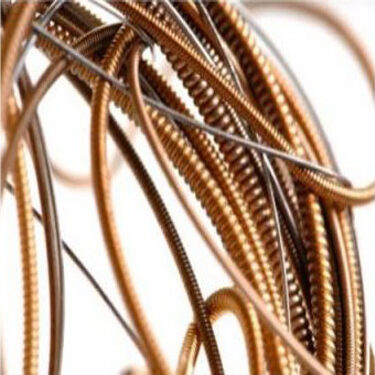
When to change your violin strings…
Yes, strings do have a life span!… ok so you’ve had those strings on your violin for about 1 year now, don’t you think it’s time you changed them?
Yes, you do have to change your strings! How often depends on how long you play/practice for as well as many other factors.
Below MP Violins will outline the importance of changing your strings, how often to change them, as well as the variables of changing your strings from gut to synthetic and/or metal-core strings, how often to change them, and how to tell when they need changing.
Strings have telltale signs that their life is coming to an end, these can be noticed as a gradual decay of the strings, as it occurs. The difficult part is understanding this yourself; one reason is that it is a slow and gradual process for the string to decay and the ear adjusts with the sound your violin produces. If you were to play the same violin with two sets of strings, one six months old and one new, you would hear a difference in sound quality, but over the duration of time as a new set deteriorates, we become accustomed to the sound produced and therefore it is hard to distinguish by sound alone, that the strings need changing.
Thankfully there are other ways to tell, as per the below and we here at MP Violins would recommend as a start, to set a reminder at least to change your strings, depending on how often you play between every 3-6 months. To be precise it is recommended to change strings every 250 – 300 hours of playtime. Most professional violinists or serious students will play anything from two to six hours daily, so would need to change their strings every two to six months. Taking into consideration that there are many factors that can deteriorate your strings, the signs to look out for that your strings need changing are as follows:
- The sound – the sound will deteriorate over time, if you’re an experienced player you might notice the instrument becoming duller, less vibrant with a lower response to the bow with regards to resonance. This might not be so distinguishable to the ear of the player but occurs over time due to natural deterioration of the string/s.
- Tuning – if you’re finding it harder to tune your instrument than usual, it is likely that the strings need changing. This is because as the strings age they stretch with tuning, constant stretching/tuning makes the strings wear thin, making it more likely that they will stretch further than the desired amount when tuned.
- Wear & tear – you will notice visibly that old strings can become frayed around the winding, the string could also become deteriorated by oxidization causing rusting of the metal, further the string may have become separated from the inner winding/core metal.
So, what can cause the strings to deteriorate? What progresses the deterioration process? What can we do to help defend the strings against deterioration?
- Resin build-up – as we rosin our bows in order to create the ideal friction of the horsehair against the string, resin residue is left on the string speeding up the decomposition process. It is always recommended to clean your instrument after every practice, lesson, or concert, this will help defend the string against decomposition created by the rosin residue. It is recommended to use a soft microfiber cloth only. After playing, use a soft microfiber cloth to clean the strings on the instrument.
- Sweat – sweat contains acids as well as salts that can speed the deterioration process, if your hands tend to sweat whilst playing it is recommended to monitor the deterioration processes mentioned above as your strings may need changing more often.
- Lubricating the nut & bridge – this will help the string winding to not get damaged, frayed, or even snap in severe cases. We recommend using a thick soft pencil, to be applied to the bridge and nut grooves before application of the strings.
If the above and aforementioned are taken into consideration, then you should know approximately when it is time to change your strings, giving you the ultimate satisfaction and playability out of your string’s lifespan and also satisfaction to the audience.





